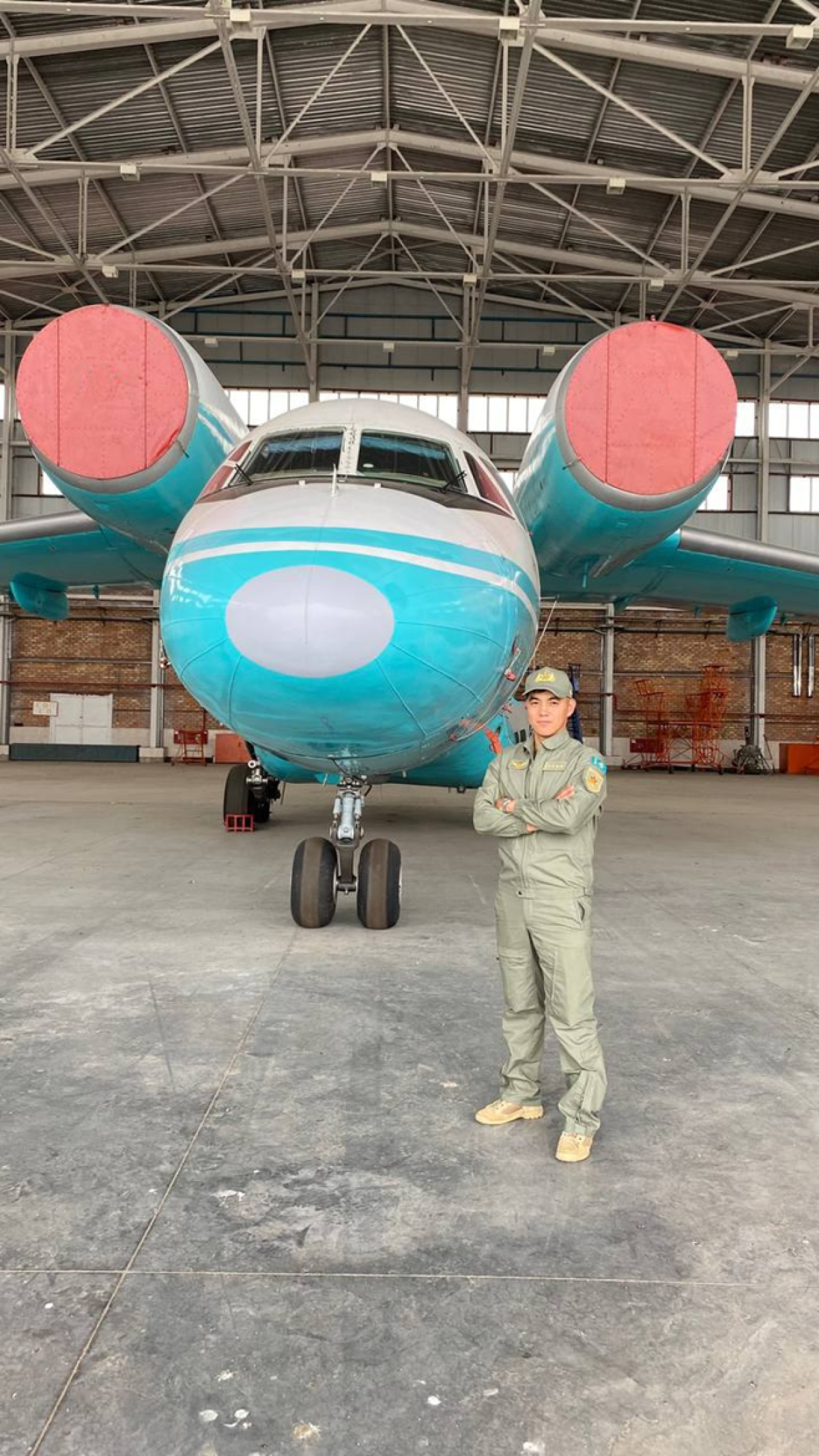
A correspondent from Sarbaz.kz spoke with a professional Kazakhstani navigator and discovered why this military specialty will always remain relevant.
With each passing year, the number of professions confidently replaced by technology is growing. Among them are the roles of navigators. For example, within civil aviation, several airlines have already phased out this profession. However, in military aviation, their role remains significant. Navigator Zhassulan Bakbergenov, from the aviation squadron of the military transport aviation has revealed the specifics of this job.
-"Could you please tell us about your service and what it entails?"
"The primary task of a navigator is to plan routes, know the aircraft's course and position. We calculate the minimal safe altitudes, study the terrain, and prepare flight documentation in advance. We ensure the proper functioning of navigation instruments, calculate flight times based on the altitude winds and fuel consumption. The most important aspect is the reliable and safe execution of the flight."
"What calculations do you perform manually?"
"To plot the route, we use an aeronautical chart on which we mark the waypoints: the departure point, turning points, and destination. We determine the distances and course angles between these points, as well as magnetic deviation. We mark the absolute maximum heights along the route, 50 kilometers on either side. During the flight, it is important to prevent the aircraft from entering restricted areas, such as violating state borders. For this purpose, we indicate the limiting azimuths on the aeronautical chart. Additionally, to ensure a safe flight, we calculate the minimum safe altitude to avoid collision with the ground or obstacles on the surface. In the vicinity of the airfield, landing points, mountainous areas, we calculate different formulas for determining the minimum safe altitudes based on the ground surface."
"If the aircraft is equipped with all the necessary technology, why is a navigator still necessary?"
"Before the flight, we input the necessary coordinates into the navigation equipment: altitudes, distances, turning points, and so on. Additionally, due to airport congestion, air traffic controllers may ask us to deviate from the assigned route. In such moments, the navigator advises the commander of the crew on the course, duplicating the controller's instructions. Our profession is particularly valuable in challenging weather conditions. There are various situations: thunderstorms, zero visibility, crosswinds, and many others. In these cases, we rely solely on the instruments. Sometimes, we intentionally work using the navigational counter."
"Do you think that artificial intelligence can replace your profession?"
"Anything is possible; science does not stand still. In military aviation, unlike civil aviation, this profession remains because, in addition to transporting cargo, we perform special tasks. For example, aerial photography, bombing, and military parachute jumps. Undoubtedly, navigation equipment instruments assist us during flights. However, it is necessary to remember that technology can fail, break down, or exhibit errors at any moment. In such situations, the navigator can quickly and accurately perform manual calculations."
Where does one need to study to become a navigator?
“After completing school in 2011, I enrolled in the Military Institute of Air Defense Forces named after the twice Hero of the Soviet Union T. Y. Begeldinov in Aktobe. I graduated from the institute in 2016, which was the last batch of navigators in Kazakhstan. After completing the studies, a ten-year government contract is offered. We start flying from the second year of study at the institute. The flight hours during training count towards the overall experience. After studying the theoretical material and training on simulators, we begin familiarization flights under the guidance of an instructor.”
What kind of reaction can a novice have during training flights, when faced with a threat of an emergency situation on board?
“A person may become paralyzed, lose control, freeze in place, not knowing what to do. Panic and shouting are also possible reactions.”
What about crying?
“Well, I haven't seen that yet” (laughs)
Military aircraft take off in bad weather conditions, while it's forbidden for civilian aircraft. Why is that?
“Each organisation has its own minimum requirements regarding weather conditions. We always try to find alternative routes. However, in cases of high necessity and with the approval of the leadership, we take off.”
Can flying become routine?
“Actually, no two flights are the same, so there's always some excitement before takeoff. For example, flying in challenging weather conditions can be nerve-wracking. Or performing a landing in field conditions rather than at an airfield. In these cases, manual calculations are necessary. Or when flying across borders, as each country has its own rules and restrictions. We make sure to prepare in advance, practice all the procedures, and prepare the documentation.”
Your job is very demanding. How do you manage stress?
“Children are the best stress relievers. We have a military psychologist in the unit, and we regularly undergo psychological testing.”
Have you encountered anything unusual or anomalous during flights?
“Well, the most challenging aspect is thunderstorm activity. In such clouds, there are unfavorable conditions for flying, and the electrical instruments can malfunction. In areas of air pockets, control over the aircraft can be lost, and the aircraft may lose altitude and descend to 100 meters due to the thin air there. Or turbulence may occur, giving the sensation that the aircraft is about to break apart. It's unpleasant.”
Interview conducted by Nargiz Mukatayeva.